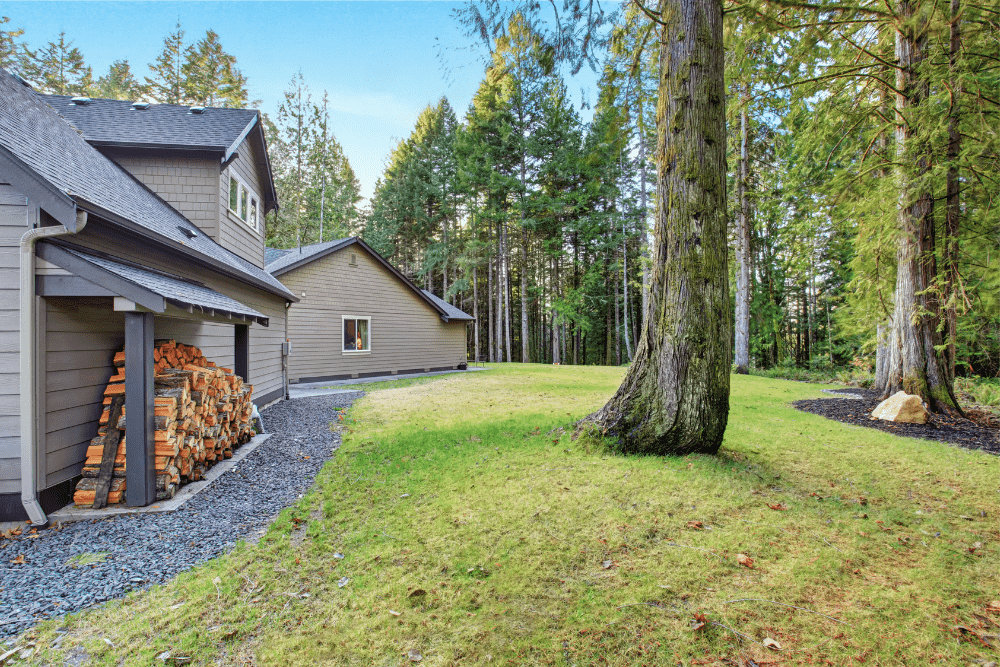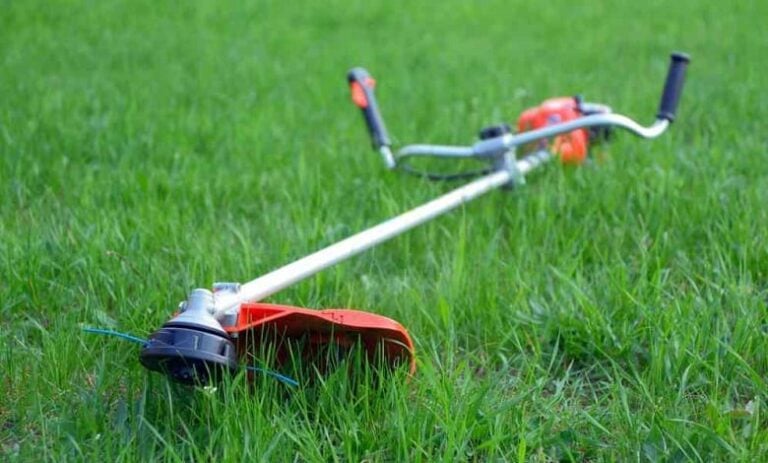How to Level a Large Yard (And Why You Should)
The size of your yard matters considerably, and if you have a particularly large yard that is bumpy and has very low spots, you might want to consider leveling it out so you can improve its appearance.
Leveling out your yard not only improves how your yard looks but it also makes it easier to care for and a lot easier to mow. Convinced to go ahead with it yet?
If you are not convinced, we have written this article to tell you all about the benefits and how you would go about leveling a large yard.
We know it can seem an overwhelming task and projects like this take a lot of time and money.
That is why getting it right the first time is so important and hopefully this article and our top tips and tricks will help you out by pointing you in the right direction.
Let’s dive in!
Leveling vs Grading a Yard
You might have come across these two terms before if you have a large yard and although confusing, a lot of people use the terms interchangeably.
They can, in a lot of ways be used interchangeably, however, as they effectively mean the same thing. However, there is one key difference between the two.
Grading is a landscaping term and is used to refer to the sloping of a yard that is facing away from the foundation of a home. Leveling on the other hand is when you create a smooth surface on any lawn or yard.
Both terms are very important to know when you are upgrading your yard but you should keep in mind how they are different.
Why would you Grade a Yard?
Grading can help with draining. Excess water can ruin any yard and is usually caused by heavy downfalls of rain throughout all four seasons. To drain your yard of this water and avoid any permanent damage, you will need a proper grading system.
If your property is well-graded, this allows for water to drift away from the home’s foundation and prevents any water from pooling. Without it, you could encounter several problems in your yard and around your home.
Furthermore, when you are looking to buy a home, it is one of the first and foremost things a home inspector will check as improper grading systems will inevitably cause a multitude of problems.

Why would you Level a Yard?
Leveling the lawn in your yard not only improves its appearance but also reduces the risks of accidents and fire hazards.
It ensures proper drainage and distribution of water and this means you won’t be left with any unappealing and soggy puddle patches.
Water often collects in low spots of uneven lawns or lawn holes and this increases the risk of the lawn developing lawn disease, whilst also encouraging unwanted disease-ridden pests such as mosquitos.
If the water can not drain from the lawn properly and away from the building’s foundation, this could cause an excessive build-up of moisture and this can lead to structural issues such as unwanted rotting and mold.
Ultimately, having a smooth, level lawn without bumps, mounds and dips is more aesthetically pleasing than a rough uneven one.
Leveled lawns are also much more practical than uneven ones as to whether it is pets, children, or adults on the lawn, there is much less risk of falling over and it is much safer for any yard activity.
When you level your lawn, it will also be easier to mow and maintain as when your lawn is bumpy or has holes in, it can lead to an uneven and unappealing mow.
It can also be incredibly annoying to try and grip onto your self-propelled mower or walk-behind mower when there are bumps in the ground as you can easily lose your grip making the mowing job ten times more difficult.
Furthermore, when you mow an uneven lawn, the blades on the mower drop lower and this results in the mower cutting the grass much too law as it passes over higher areas of the yard.
A leveled lawn means you are left with a much higher quality cut and the process of mowing is much less taxing.
Over time, lawns naturally become uneven and even more so when the lawn has not been graded or leveled in several years.
Uneven lawns are caused by a variety of factors from animal digging, to thinning turfgrass, to a change in water flow, to pests, to contractor repairs, or even compaction due to heavy traffic.
An uneven lawn can even develop because of improper lawn care practices or the original builder who built the home could have made mistakes to begin with.
Tools
Leveling and grading a yard requires several special tools and can be tackled with a few different approaches.
These approaches range from working with walk-behind machines and specific hand tools for minor yard repairs to renting large pieces of equipment such as a small excavator or bobcat to save time and energy.
You can also opt to hire a contractor to visit your yard and do the work for you. This will ensure you have it graded or leveled to a professional standard.
A DIY option is a popular option among gardeners but for this option, you need to be using the following tools:
- Thatch Rake
- Lawn Mower
- Landscaping Rake
- Tiller
- Flathead shovel
- Detaching machine
- 4 stakes
- Ball of string
- Wheelbarrow
- Lawn Roller
- Line-level/carpenter’s level, string level, or bricklayer’s level
- Sand
- Compost
- Mulch or Topsoil
- Push broom
Grading a Yard
Grading your yard may seem a simple process but it is actually slightly more complicated than you may think. Using only your eyes and common sense will allow you to grade your yard and the surrounding soil of your foundation but you will also need to make a note of low spots around this foundation by walking around the base of your home. You will also have to determine the slope of your current yard area and use dirt to fill up certain areas to measure if they will fit comfortably within your grade slope. Ensure this matches every other area of your home grading so that it gives it a rounded and pleasing appearance.
Leveling a Yard
Before starting to level your yard, you need to make sure you have proper grading and that is why we have given you some grading information in this article. Proper grading will save you time and ensure your hard work does not have to be redone.
If you decide to level your yard, it should not take you any longer than a day depending on how big your yard is. The following steps should guide you through the process:
- Determine which areas of the lawn need to be level and this will stop you from having to unnecessarily dig. It’s also much less expensive to re-seed only in places that need re-seeding, instead of you having to re-seed the whole lawn.
- Now you will need to use your mower to trim your lawn and mow slightly shorter than you normal when you are giving your lawn a regular trim.
- After you have trimmed your lawn, you will need to have a wander around and evaluate which areas have any grooves, ridges, or bumps. It’s a good idea to try marking these areas so they are easier to spot.
- You now need to work out how much thatch is on your lawn and get rid of any thatch you find by tugging it out or using a thatch rake along the surface. If you have a much larger yard, you might even need to rent a professional dethatching machine.
- Use topsoil or a topsoil mix to level out any spots and use a shovel to then reduce any bumps. You can also create a topsoil mix by mixing two parts topsoil and sand and one part compost. The sand helps to maintain a level yard while the topsoil and compost give your grass nutrients to enhance growth.
- Dig the grass in lower spots or divots which are about 2-3 inches deeper and fill the hole with topsoil mix before replacing the turf and pressing it right down.
- After you have added the topsoil, use a rake or a lawn roller and level off any new soil. You now need to compact this new soil with water but be careful not to overwater it.
- Use your shovel to redistribute the soil and if you use the soil you had already removed from raised areas, you can fill in depressions and low points whilst also saving a little money.
- If you need to, you can use a tiller to break up the top of the soil and this will loosen it up, making it easier for you to work whilst leveling your yard.
- Keep an eye on the lawn and make sure it is becoming level as you work. Stake out the section you need to level with four stakes and drive these into the four different sections you plan on leveling.
Tie your string to the stakes to create a square or rectangular shape and adjust your line level to the string. You will need to measure out every 3-5 feet to determine which areas need raising and which need lowering.
- Use the back end of your rake to flatten out the soil before you spread your seed. Ensure you have watered your new leveled soil too before spreading your seed with soft oscillating sprinklers.
This aids the topsoil in settling and allows you to fill any air pockets or depressions that have formed in the process.
- When you are satisfied with your leveled lawn, law down fresh sod and get ready to start seeding.
- You might need more than one application of soil to complete leveling a particularly large yard. You will also need to find active grass growth or little to no sign of initial application to work out the need for any more leveling work.
When Should I Level My Yard?
Deciding when you level your yard can depend on a range of factors but most commonly people prefer to level their yard in the early fall. Although you can succeed by leveling and seeding a yard in the middle or latter half of spring, we recommended you stick to fall.
Fall is a popular time to level your lawn because the soil is warm which allows for quicker germination and the new grass is not stressed by the heat of summer. It is also allowed to establish stronger roots in preparation for the winter.

Top Tips
Before we wrap up this article, we are going to go through some of our top tips for leveling a large yard and let you know of a few considerations you should keep in mind throughout the process.
These tips will save you both time and money and they are therefore important to keep in mind.
- Before you begin to dig, it’s good practice to call 811 and have underground utilities marked on and around your home so you can watch out for these.
- You also need to ensure your ground can be worked with before starting. Using a tiller will allow you to soften the ground and this will make the entire process a lot more simple.
If your area is going through a bit of a dry spell however and it has not rained in a while, water your lawn before starting your work. This should be done the day before and will make your turf a lot softer to work with. It will also minimize dust.
- Closed-toe shoes are the best footwear option for leveling out a yard so you can minimize the risk of injury.
- Before you begin leveling, determine the underlying problem which is causing the ground to be so uneven. Finding this out before beginning any work will avoid you having to do further work in the future.
- Cut the grass short before starting to level your lawn but avoid leaving visible grass blade stems. You need there to be enough leaf for the grass to keep its strength and recover quickly enough.
- Remove perennial plants from the lawn before leveling out your yard and these plants are tough enough to recover quickly when you replace them in your landscape. Re-planting is a simple process and you should do this soon after you have finished your work.
- Spread a thin layer of compost or hay over bare areas when you spread your seed so that it acts as mulch. This will minimize weed growth and keep your sand as moist as possible. It will also prevent any erosion when you new grass is establishing itself.
Stones can be placed at the base of a new slope and this will allow you to effectively back-fill soil. Stacking stones can create an attractive retaining wall that discourages any loose soil from eroding.
Final Thoughts
We hope by reading this article we have told you everything you need to know about leveling a lawn, including why grading is so important and how leveling the lawn of a large yard can not only improve appearance but also reduce the risks of any accidents or fire hazards.
We’ve provided our top tips on leveling your lawn and even though it might take a lot of time and effort, we promise if you follow these tips you shouldn’t encounter any problems in the future.
So grab those tools, it’s time to level that lawn for a smooth, gorgeous finish in your yard that is both safe and practical all year round.





